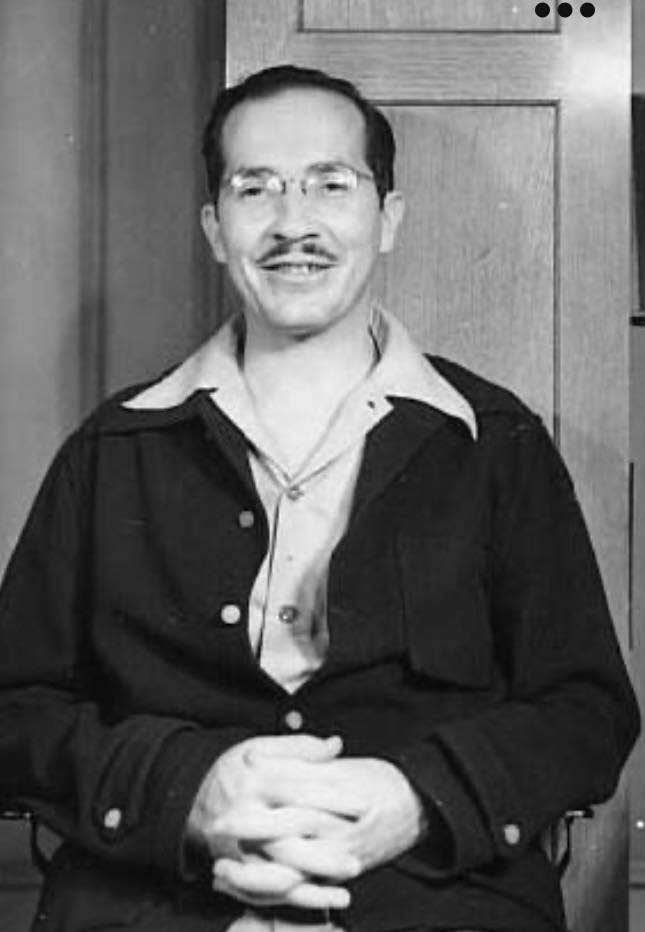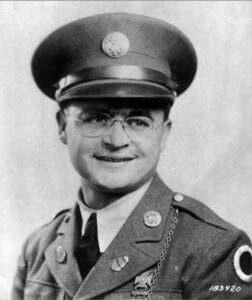
Since late in 1944, Nelson Eddy’s recording of “The Ballad of Rodger Young” had been playing on the radio, and that song became intensely meaningful to Heinlein.
Young, an infantry private, had been killed on July 31, 1943, in the campaign for the Solomon Islands. He had been a runt—five feet two inches—and so nearly deaf that he had given up leadership of his squad and asked to be demoted to private because he feared missing an order in battle that would get his squad killed. He was wounded when his squad was pinned down by a hidden Japanese machine gun nest protecting the Munda airstrip on the island of New Georgia, and a second time when his return fire pinpointed his position. He had crept forward and begun to throw hand grenades, covering his squad’s withdrawal. He was shot a third time and killed. This was the “finest traditions” of the infantry.
When Private First Class Frank Loesser heard about the posthumous Congressional Medal of Honor awarded Rodger Young in January 1944, he had written the song. It was released later that year. For Heinlein, “The Ballad of Rodger Young” was symbolic of the war and of what even he, sheltered and sequestered in the Philadelphia Navy Yard, experienced on a daily basis.
“We had a very nervous-making day last week,” Heinlein wrote (John W.) Campbell, “but one of the most remarkable and significant of my life. First, it was Leslyn’s day to work with her blind marines in the shop—work she loves and has worked up herself, but hard on her emotionally—then, as we came out of the lunchroom that noon, we found ourselves listening to a speaker outside—it was … just a guy in uniform talking about action he had seen. But I could not walk on past. The man brought it to you and laid it in your lap, with the blood still flowing …”
“I couldn’t leave until he had stopped talking. I skipped my one and only chance to buy my weeks’ cigarette ration in order to hear him, but I could not leave. It was while he was talking that I decided that I could not with clear conscience take a day off until I had my work in better shape.”
“Well—that night we went across the street to dinner. Miles’ and Rod’s was crowded. There was a marine with one leg sitting on the couch. He said, no, he wasn’t waiting for a table; he had had to move because the hard chair hurt him—his leg wasn’t healed. Presently a party started coming out, another one-legged marine with a corpsman, then a bluejacket with a crutch under the stump of his arm, then a man with no legs, carried. The marine said with respect to the bluejacket, “There’s the bravest guy in the ward. One arm, one leg, one eye, and one ear—and he jokes about it.”
“We went in as the marine left, feeling pretty shaky, but thinking that the party was gone. But there was still one marine in there, apparently all right. As the last one on crutches left, this one said, “There’s the way I’m going to walk.” Just then a corpsman returned, said brightly, “bet you thought I’d forgotten you,” and turned around, presenting his back to the kid. The kid put his arms around the corpsman’s neck and the corpsman carried him out, like a sack of flour. There was just enough of him left to sit down.”
“I got up and went out and locked myself in the head and bawled my eyes out for about fifteen minutes. Then we took a walk around the block and came back. I was all right by then but I couldn’t get Leslyn to eat.”
“I wish more people could have seen them.”
– “Robert A. Heinlein: Volume I: Learning Curve, 1907-1948” by William H. Patterson Jr.




